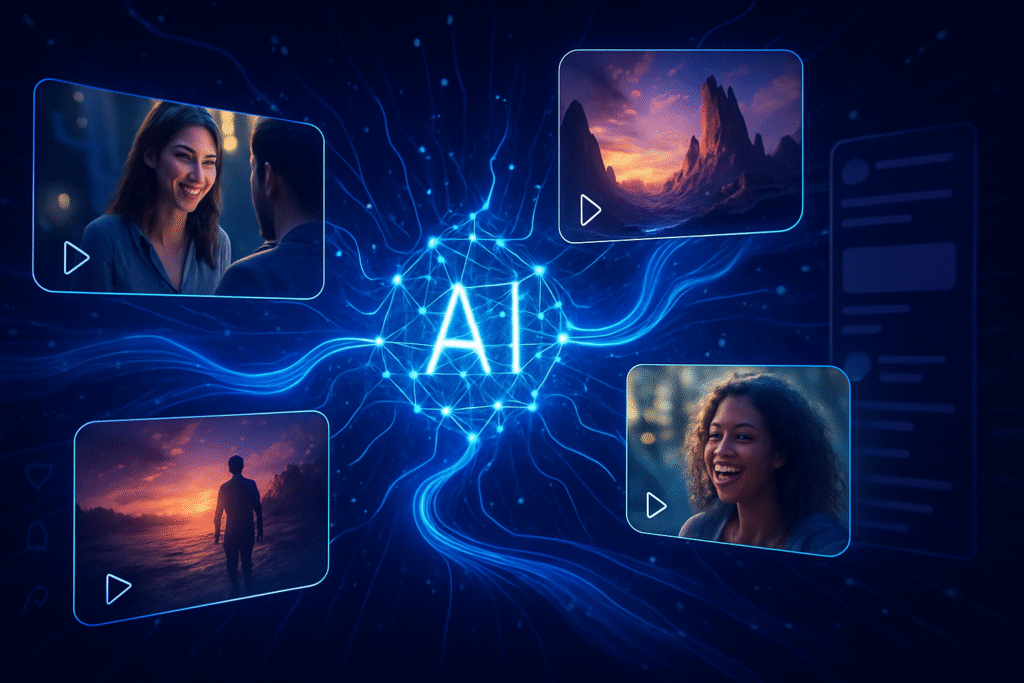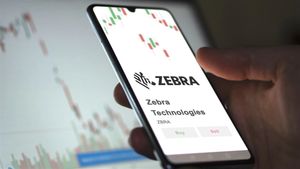
San Francisco, CA – October 8, 2025 – OpenAI has officially launched its groundbreaking social media application, Sora, on September 30, 2025, marking a pivotal moment in the evolution of generative artificial intelligence and a direct foray into the consumer social media landscape. Powered by the highly anticipated Sora 2 model, this new platform allows users to effortlessly create and share hyper-realistic, AI-generated videos from simple text prompts, fundamentally reshaping content creation and challenging established social media giants.
The unveiling of Sora, initially available on iOS in the U.S. and Canada, signifies OpenAI’s strategic shift from primarily developing AI tools to becoming a consumer-facing platform builder. This move positions the company as a formidable competitor in the social media space, promising to democratize high-quality video production and usher in an era where imagination-driven creation takes center stage. However, it also ignites urgent conversations around misinformation, job displacement, and the ethical deployment of increasingly powerful AI.
Unprecedented Realism and "World Modeling": The Technical Prowess of Sora 2
At the heart of OpenAI’s new social app lies the Sora 2 model, a significant advancement building upon the capabilities of the original Sora. Both models leverage a sophisticated diffusion transformer architecture, a cutting-edge approach that first compresses raw video into a lower-dimensional latent representation, then converts it into "spacetime patches" that act as tokens for a transformer. This allows the AI to treat video as a 3D object, generating coherent and dynamic visual content through iterative denoising.
Sora 2 distinguishes itself with several key technical enhancements: it can generate longer video clips (30 to 60 seconds), boasts higher fidelity with sharper textures and greater detail, and achieves unprecedented temporal consistency, ensuring objects maintain permanence even when moving in and out of view. Crucially, Sora 2 dramatically improves physical realism and "world modeling," accurately simulating complex interactions like gravity and buoyancy, and even generating different video angles without explicit prompts—a major step towards AI understanding and simulating the physical world. A standout feature is its native synchronized audio, seamlessly embedding dialogue, sound effects, and background music directly into the generated videos, a significant leap from the silent clips of its predecessor. The app also introduces a "Cameo" feature, allowing users to insert their verified likeness and voice into AI-generated scenes after a one-time identity verification, and "Remixing Capabilities" for collaborative content modification.
Initial reactions from the AI research community and industry experts have been a mix of "awe and apprehension." Many hail Sora 2 as a "game-changer" and a "GPT-3.5 moment for video," praising its technical impressiveness, particularly its unparalleled quality of motion, understanding of object physics, and object permanence. Experts believe it will democratize high-quality video content, revolutionize pre-production in filmmaking, and open new creative possibilities for independent creators. However, significant concerns have been raised regarding the potential for deepfakes and misinformation, job displacement in creative industries, and copyright issues, especially given OpenAI's default allowance of copyrighted content unless rights holders opt out. Despite OpenAI's implementation of C2PA metadata, visible watermarks, and content filters, the challenges of moderation and preventing misuse remain substantial.
Reshaping the Competitive Landscape: Tech Giants, AI Labs, and the Rise of Sora-Native Startups
OpenAI’s launch of the Sora app and Sora 2 model has ignited an intense "AI video arms race," forcing a strategic re-evaluation across the technology industry. This move directly positions OpenAI as a competitor in the social media arena, challenging established players and compelling accelerated innovation.
For tech giants, the implications are profound. Meta Platforms (NASDAQ: META) has responded by rolling out its own short-form AI-generated video app, "Vibes," and continues to develop its "Make-A-Video" model. Alphabet Inc. (NASDAQ: GOOGL), through its Google division, has advanced its text-to-video model, Veo 3, which now supports 1080p output and vertical video, directly competing with Sora. Both Meta and Google leverage their massive user data, established distribution channels, and extensive digital advertising businesses to defend their market share, emphasizing safety measures like invisible watermarks and "AI Info" labels. The competitive focus for these major AI labs is now squarely on achieving superior quality, realism, video length, and controllability, with multimodal capabilities and seamless ecosystem integration becoming crucial strategic advantages.
Startups face a dual impact. Those directly competing in general text-to-video generation with less advanced models are at significant risk of disruption. Industries like traditional video editing, stock footage, and animation could see many tasks automated, reducing the need for large production teams. Indeed, industry figures like Tyler Perry have already paused studio expansions due to Sora’s capabilities. Conversely, Sora unlocks new opportunities for a wave of "Sora-native" startups. These emerging companies are leveraging Sora’s API (once released) to build automated content creation platforms, AI-native content studios, tools for marketing and social media automation, and entirely new forms of storytelling. Successful startups will likely focus on niche applications, enhancing, managing, or distributing AI-generated content, or offering specialized services by building on top of major models like Sora 2.
Sora's emergence signifies a major shift towards multimodal AI and the democratization of content creation. By launching a consumer-facing app with features like "Cameo" and community remixing, OpenAI aims to foster a new form of creative social interaction, potentially diversifying its revenue streams beyond subscriptions into the lucrative digital advertising market. How companies navigate the ethical challenges, from deepfakes to copyright, will heavily influence user trust and regulatory scrutiny, critically impacting their market positioning.
A New AI Milestone: Broader Significance and Societal Crossroads
Sora 2 is not merely an incremental upgrade; it represents a profound shift in the broader AI landscape, cementing OpenAI's leadership in generative AI and pushing the boundaries of what AI can create. Its ability to generate high-fidelity, long-form video with realistic physics positions it as a "GPT-3.5 moment for video," comparable in its transformative power to GPT-3 for text generation. This breakthrough reinforces the burgeoning trend of multimodal AI, where systems seamlessly integrate and understand various data types—text, images, audio, and video—to deliver richer outputs. OpenAI's strategic move into a TikTok-like social platform also signals a new direction for social media, where AI-generated content could become the primary form of entertainment and interaction.
Beyond the immediate creative and economic impacts, Sora 2 amplifies significant societal concerns. While deepfakes and job displacement are prominent, the wider implications include the potential for widespread misinformation and disinformation, eroding trust in all visual media. The ease of fabricating convincing videos could be exploited for political manipulation, fraud, harassment, and reputational damage. The use of vast datasets for training, potentially including copyrighted material, raises complex intellectual property challenges, prompting calls for robust legal and ethical frameworks. There's also the concern of "AI slop"—a deluge of generic or low-quality AI-generated content that could homogenize creativity and degrade the information ecosystem. Furthermore, the intensive computational resources required for such advanced models raise questions about their environmental footprint.
Comparing Sora to previous AI milestones, its impact parallels GPT-3 in democratizing a complex creative process, making sophisticated video generation accessible to the masses, much like GPT-3 did for advanced text generation. While AlphaGo demonstrated superhuman strategic decision-making in a complex game, Sora showcases an unprecedented ability to simulate and create realistic, dynamic content of the physical world, representing a breakthrough in creative content generation and world simulation. Both underscore the rapid and diverse advancements in AI, but Sora's direct impact on visual media and social interaction presents a unique set of opportunities and challenges.
The Horizon: Future Developments and Expert Predictions
The trajectory for OpenAI's Sora and the broader AI video generation space is one of rapid evolution, with both near-term and long-term developments promising to reshape industries and redefine human-AI collaboration. In the near term, we can expect wider accessibility, with an Android version and broader web access for Sora anticipated, alongside the crucial release of an API to unlock a vast ecosystem of third-party integrations. OpenAI is also likely to refine its monetization strategies, moving beyond initial free access to tiered subscriptions for higher resolution or longer videos, or potentially integrating advertising within the social app. Core capabilities will continue to improve, enhancing realism, temporal consistency, and the nuance of the "Cameo" feature. OpenAI is actively developing revenue-sharing models and IP controls for rights holders, a critical step for broader industry acceptance.
Long-term, experts envision Sora evolving into "general-purpose world simulators" capable of understanding and simulating the physical world with high fidelity, potentially accelerating scientific discovery and allowing researchers to test complex hypotheses virtually. Future AI video tools are expected to create more complex, longer-edited narratives with seamless transitions, demonstrating a deeper understanding of cinematic techniques and aesthetics. Hyper-realistic human elements, including improved facial animation and accurate lip-syncing, will further reduce the "uncanny valley" effect. AI video generation is also poised to become a cornerstone of content for Augmented Reality (AR) and Virtual Reality (VR), generating interactive 3D spaces and photorealistic avatars.
Potential applications span numerous industries: from streamlining VFX and de-aging actors in film production to rapidly creating customized marketing campaigns, developing personalized educational content, and generating dynamic game assets. However, significant challenges remain. Technical limitations include accurately depicting precise physical causality, maintaining narrative coherence over longer sequences, and interpreting highly complex prompts without surreal distortions. Ethically, the fight against deepfakes and misinformation will intensify, requiring robust detection mechanisms and regulatory oversight. Bias in training data, intellectual property infringement, and the potential for job displacement will continue to be critical areas of concern. Experts predict that AI-generated video will soon become the norm, but emphasize the need for creators to merge human elements into AI videos to address limitations and maintain emotional depth, ensuring that the technology enhances, rather than diminishes, human creativity.
A Defining Moment: Summarizing Sora's Impact and What Lies Ahead
OpenAI's Sora 2 and its accompanying social app represent a defining moment in the history of artificial intelligence. By democratizing the creation of highly realistic, high-fidelity video content with integrated audio and sophisticated physics modeling, Sora has not only set a new benchmark for generative AI but has also ignited a profound shift in how digital content is conceived, produced, and consumed. It is a powerful testament to the rapid advancements in AI, pushing us closer to the vision of "general-purpose world simulators" and potentially, Artificial General Intelligence (AGI).
The immediate significance lies in its transformative potential across creative industries—from filmmaking and advertising to education and social media. Sora offers unprecedented efficiency and accessibility, enabling individuals and small teams to produce professional-quality videos with ease. However, this immense power comes with significant ethical and societal responsibilities. The amplified risks of deepfakes, misinformation, job displacement, and complex intellectual property debates necessitate continuous vigilance, robust safety mechanisms, and proactive regulatory frameworks.
In the coming weeks and months, several critical developments will shape Sora's trajectory. Watch for its wider availability beyond the initial invite-only iOS launch, the release of its API to foster third-party innovation, and the evolution of its monetization strategies. Crucially, how OpenAI addresses the ethical and legal challenges—particularly around content moderation, deepfake detection, and copyright—will be paramount for public trust and widespread adoption. The competitive landscape will continue to intensify, with rival tech giants and AI labs pushing their own innovations, making this an exciting and challenging era for AI video generation. Sora is not just a new app; it's a harbinger of a future where AI deeply integrates into our creative and social lives, demanding thoughtful navigation of its immense potential and profound implications.
This content is intended for informational purposes only and represents analysis of current AI developments.
TokenRing AI delivers enterprise-grade solutions for multi-agent AI workflow orchestration, AI-powered development tools, and seamless remote collaboration platforms. For more information, visit https://www.tokenring.ai/.






